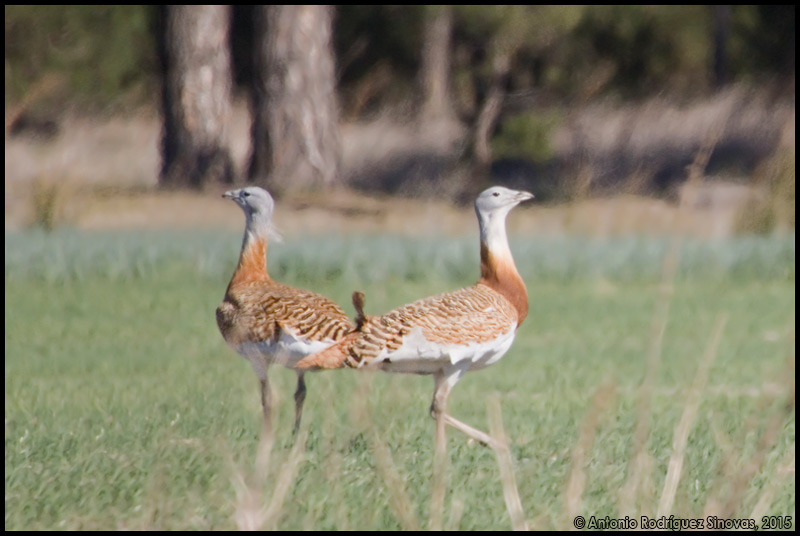Esta vez mi primer objetivo eran algunas de las rarezas que se estaban viendo en el Delta del Ebro. La más importante para mi era el alcaudón pardo, pero también el correlimos oscuro, que no había visto nunca, y es raro en Cataluña. Ambas se encontraban en el hemidelta norte, en Deltebre y L'Ampolla, respectivamente (para más detalles sobre la localización exacta, visitar la web Ornithocat). El más difícil de ver fue el alcaudón pardo, que requirió dos intentos.
This time my aim was to see some of the rarities that were in the Ebro Delta. The most important was the brown shrike, but also the purple sandpiper, a rarety for Catalonia. Botw were in the north part of the Ebro Delta, in Deltebre and L'Ampolla, respectively (if you need more details on the exact location, you can visit the web Ornithocat). The most difficult was to see the brown shrike, with two attempts.
Una vez conseguido, pasé a realizar mi ruta habitual en el hemidelta sur. Allí pude ver un buen montón de limícolas, incluyendo vuelvepiedras, chorlitos grises, correlimos comunes y menudos, chorlitejos grandes y patinegros, etc. Dejo algunas fotos testimoniales de las observaciones.
Then I move to the south part of the Ebro Delta, where I did my usual route. There I managed to see a good number of ruddy turnstones, sandpipers, plovers, little stints, dunlins, and other species. Here you have some pictures.
Powered by Wikiloc
Ruta por el Parque Natural Delta de l'Ebre, Hemidelta Sur (Tarragona)Y debajo os dejo mi primer video, que incluye imágenes del correlimos oscuro, de un archibebe claro, de correlimos menudos y de un chorlitejo patinegro.
And below you can see my first video, including images of the purple sandpiper, a common greenshank, some little stints, and a Kentish plover.
Lista de especies observadas / Observed bird species:
Tadorna tadorna - Tarro Blanco - Common Shelduck - 3
Anas strepera - Ánade Friso - Gadwall - 4
Podiceps cristatus - Somormujo Lavanco - Great Crested Grebe - >10
Tachybaptus ruficollis - Zampullín Común - Little Grebe - 4
Phalacrocorax carbo - Cormorán Grande - Great Cormorant - >10
Nycticorax nycticorax - Martinete Común - Black-crowned Night-heron - 1
Bubulcus ibis - Garcilla Bueyera - Cattle Egret - >10
Egretta garzetta - Garceta Común - Little Egret - >10
Ardea cinerea - Garza Real - Grey Heron - 5
Ardea purpurea - Garza Imperial - Purple Heron - 3
Plegadis falcinellus - Morito Común - Glossy Ibis - >10
Phoenicopterus roseus - Flamenco Común - Greater Flamingo - >10
Anas platyrhynchos - Ánade Azulón - Mallard - >10
Anas querquedula - Cerceta Carretona - Garganey - 3
Netta rufina - Pato Colorado - Red-crested Pochard - >10
Circus aeruginosus - Aguilucho Lagunero Occidental - Western Marsh-harrier - 2
Gallinula chloropus - Gallineta Común - Common Moorhen - >10
Fulica atra - Focha Común - Common Coot - >10
Porphyrio porphyrio - Calamón Común - Purple Swamphen - >10
Himantopus himantopus - Cigüeñuela Común - Black-winged Stilt - >10
Recurvirostra avosetta - Avoceta Común - Pied Avocet - 3
Charadrius hiaticula - Chorlitejo Grande - Common Ringed Plover - 5
Charadrius alexandrinus - Chorlitejo Patinegro - Kentish Plover - 6
Pluvialis squatarola - Chorlito Gris - Grey Plover - 5
Arenaria interpres - Vuelvepiedras Común - Ruddy Turnstone - >10
Calidris alpina - Correlimos Común - Dunlin - 8
Calidris maritima - Correlimos Oscuro - Purple Sandpiper - 1
Calidris minuta - Correlimos Menudo - Little Stint - >10
Tringa totanus - Archibebe Común - Common Redshank - 8
Tringa nebularia - Archibebe Claro - Common Greenshank - 6
Actitis hypoleucos - Andarríos Chico - Common Sandpiper - 4
Larus ridibundus - Gaviota Reidora - Common Black-headed Gull - >10
Larus audouinii - Gaviota de Audouin - Audouin's Gull - >10
Larus michahellis - Gaviota Patiamarilla - Yellow-legged Gull - >10
Sterna caspia - Pagaza Piquirroja - Caspian Tern - >10
Chlidonias hybrida - Fumarel Cariblanco - Whiskered Tern - >10
Columba livia/domestica - Paloma Bravía/doméstica - Rock/Domestic Pigeon - >10
Streptopelia decaocto - Tórtola Turca - Eurasian Collared-dove - 2
Galerida cristata - Cogujada Común - Crested Lark - 4
Riparia riparia - Avión Zapador - Sand Martin - >10
Hirundo rustica - Golondrina Común - Barn Swallow - >10
Motacilla alba - Lavandera Blanca - White Wagtail - 2
Motacilla flava - Lavandera Boyera - Yellow Wagtail - 3
Turdus merula - Mirlo Común - Eurasian Blackbird - 2
Cisticola juncidis - Buitrón - Zitting Cisticola - 2
Sylvia communis - Curruca Zarcera - Common Whitethroat - 2
Sylvia melanocephala - Curruca Cabecinegra - Sardinian Warbler - 2
Phylloscopus collybita - Mosquitero Común - Common Chiffchaff - 2
Sturnus vulgaris - Estornino Pinto - Common Starling - >10
Sturnus unicolor - Estornino Negro - Spotless Starling - >10
Pica pica - Urraca - Black-billed Magpie - >10
Passer montanus - Gorrión Molinero - Eurasian Tree Sparrow - >10
Passer domesticus - Gorrión Común - House Sparrow - >10
Serinus serinus - Verdecillo - European Serin - >10
Carduelis chloris - Verderón Común - European Greenfinch - 1















































